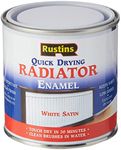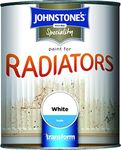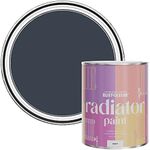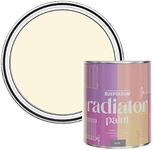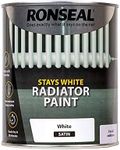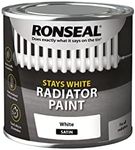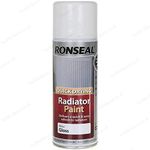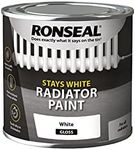Buying Guide for the Best Radiator Paint
Choosing the right radiator paint is essential for both aesthetic and functional purposes. Radiator paint not only enhances the appearance of your radiators but also protects them from rust and heat damage. When selecting radiator paint, consider the type of finish you desire, the color that matches your decor, and the paint's heat resistance. It's important to ensure that the paint is specifically designed for radiators to withstand high temperatures without peeling or discoloring. Understanding the key specifications will help you make an informed decision that meets your needs and preferences.Heat ResistanceHeat resistance is a crucial specification for radiator paint because radiators can get very hot when in use. Paint that is not heat-resistant may peel, crack, or discolor over time. Heat resistance is usually measured in degrees Celsius or Fahrenheit, indicating the maximum temperature the paint can withstand. For most home radiators, a paint that can handle temperatures up to 200°C (392°F) is sufficient. If your radiator operates at higher temperatures, look for paints with higher heat resistance. Choose a paint with adequate heat resistance to ensure longevity and maintain the appearance of your radiators.
Finish TypeThe finish type of radiator paint affects both the look and feel of the radiator surface. Common finishes include gloss, satin, and matte. Gloss finishes are shiny and reflective, making them easy to clean but also more likely to show imperfections. Satin finishes offer a balance between gloss and matte, providing a subtle sheen that hides imperfections better than gloss. Matte finishes are non-reflective and can give a more modern look but may be harder to clean. Consider the overall aesthetic of your room and the level of maintenance you're willing to perform when choosing a finish type.
ColorColor is an important consideration when selecting radiator paint, as it can complement or contrast with your room's decor. Radiator paints are available in a wide range of colors, from classic whites and neutrals to bold and vibrant hues. When choosing a color, think about the existing color scheme of your room and whether you want the radiator to blend in or stand out as a feature. Neutral colors are versatile and timeless, while bold colors can add a pop of interest. Your personal style and the room's design should guide your color choice.
Drying TimeDrying time refers to how long it takes for the paint to dry to the touch and fully cure. This is important because it affects how soon you can use your radiator after painting. Quick-drying paints can be convenient if you need to use the radiator soon after painting, while longer drying times may require more planning. Drying time can vary from a few hours to a full day, depending on the paint formulation. Consider your schedule and how soon you need the radiator back in operation when evaluating drying times.
Application MethodThe application method for radiator paint can influence the ease and quality of the finish. Common methods include brush, roller, and spray. Brush application allows for precision and is ideal for detailed work, but it may leave brush marks. Rollers can cover large areas quickly and provide a smooth finish, but they may not reach tight spaces. Spray application offers an even finish and is fast, but it requires careful masking to avoid overspray. Consider your comfort level with each method and the specific requirements of your radiator when choosing an application method.
